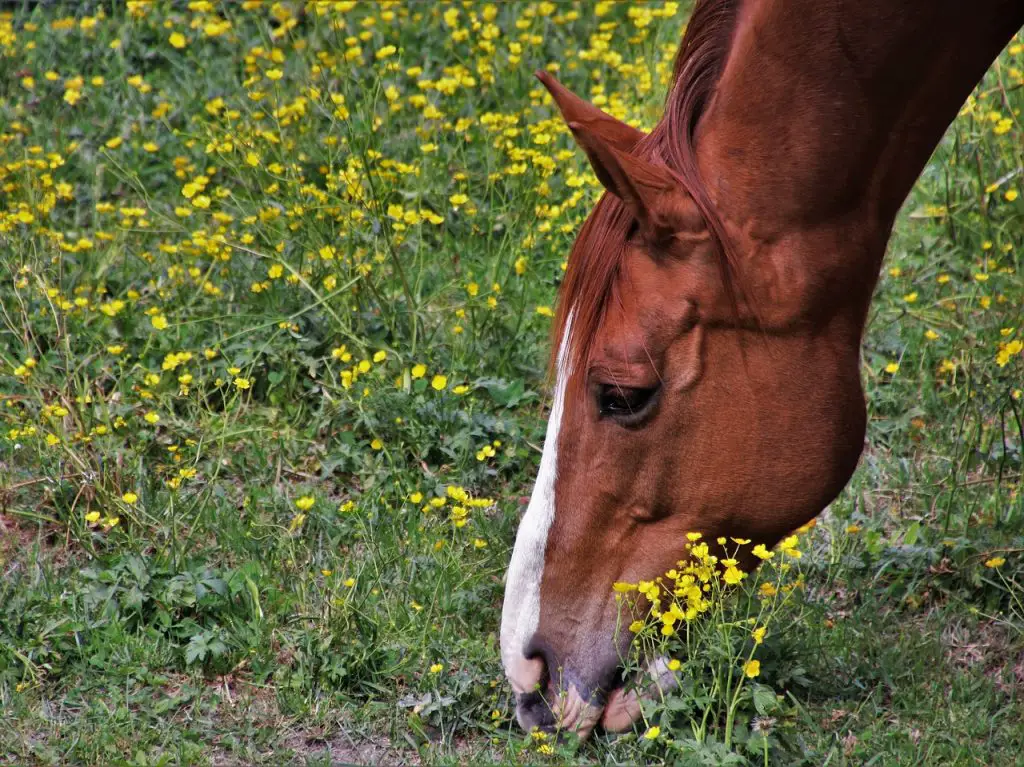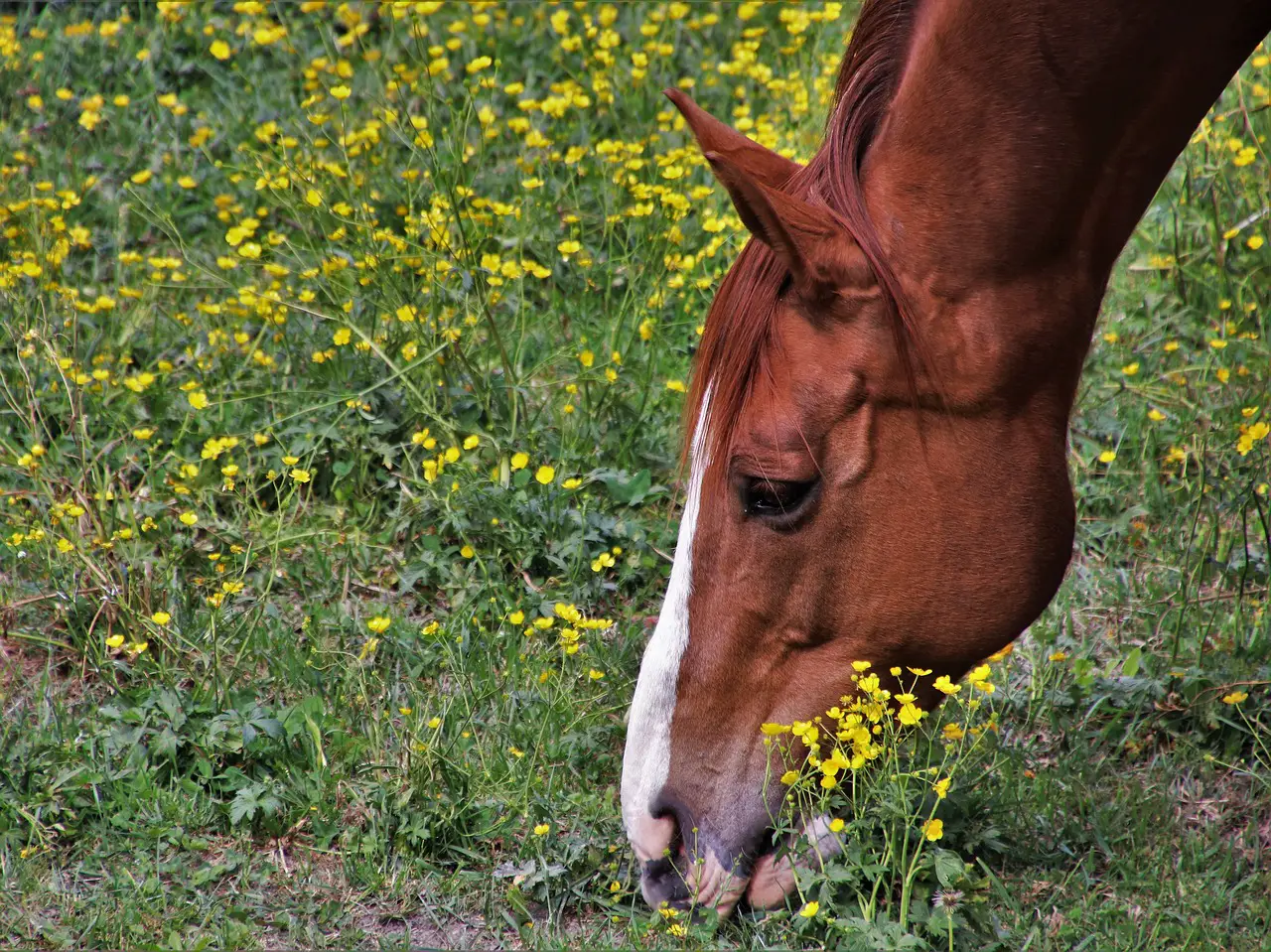Last Updated on February 21, 2022 by Allison Price
Since ancient times, lupins have been grown in Egypt and the Mediterranean. Lupins are a popular choice for Australian farm animals, as they can be used extensively for forage and feed in other parts.

However, lupins are a relatively recent addition to the list. Lupins, which are considered a legume, have a tough, tough outer coating that requires soaking, rolling and crushing to allow the horse to chew them properly. Although lupins can be heat-treated or pelleted to improve their taste and digestibility, little is known about the effects of processing on their digestion.
The majority of lupins in Australia are grown in Western Australia. However, some lupins can be found in Victoria, South Australia and New South Wales. There are two main types of lupins: the sweet and the bitter. Horses can only eat sweet lupins. Sweet lupins can be mistakenly mistaken for corn when crushed. Their speckled outer seed cases make them easily identifiable.
Bitter varieties have high levels of toxic alkaloids, which can reduce palatability and cause harm to horses. If lupins are given to other animals, it can cause productivity drops.
Although lupins are a good source of protein (28-34% in crude protein), they also have some fat (around 5%) and digestible fiber. Because they have lower levels of lysine (and methionine) than other protein supplements (see tableau), more lupins will be needed to provide the same amount.
Comparison of lupins with other popular protein supplements
| Lupins | Cottonseed meal | Soybean oil full-fat | Linseed meal | Sunflower seeds | Tick beans | Lucerne hay | Soy meal | |
| Digestible Energy (MJ/kg). | 14.6 | 11.5 | 20 | 11.4 | 19 | 13.2 | 8.2 | 14. |
| % Crude Protein | 28-34 | 38 | 38 | 34 | 20 | 25 | 16 | 45 -48 |
| Crude Fibre % | 12 | 11 | 4 | 9 | 29 | 8 | 26.1 | 5.8 |
| % Fat | 5.4 | 5 | 18 | 1.5 | 25 – 30 | 2 | 1.6 | 1 |
| % Lysine | 1.4 | 1.5 | 2.3 | 1.16 | 0.6 | 1.7 | 0.79 | 2.6 |
| % Methionine | 0.22 | 0.5 | 0.5 | 0.4 | 0.4 | 0.2 | 0.33 | 0.64 |
Lupins, however, are much more appealing than soybean meal. They can also be fed in larger quantities because they are a grain, not a meal. Lupin oil is 35% monounsaturated fat acids, 45% polyunsaturated fat acids, and 2% of sterols. These oils are stable for long periods in whole seeds. While it is believed that processing can reduce shelf life, no studies have been done to determine nutrient stability in storage after cracking and processing.
Lupins can be easily digested in horses’ hindguts due to their high starch content and high fibre. Beet pulp, soy hulls, and beet pulp are two other high-fibre feeds that are used around the world. However they do not contain the same high levels of protein and fat as lupins. They also don’t have as much energy. This makes lupins ideal for horses with a low tolerance to starch-rich grains like oats and corn.
Supplementing lupins may be beneficial for horses with predispositions to laminitis or tying up, as well as those who are hypersensitive to typical cereal grains. Although lupins are low in starch, they can be considered a “cool” feed. However, their high protein content as well as the presence of alkaloids mean that they should not be added to a horse weighing 500 kg (1,100 lb). Standardbred horses are currently being fed lupins. However, some horses are getting more than 2kg (4.4 lb) daily.
Lupins can be used as both an energy source and as a protein supplement. Lupins are a good choice for protein supplementation as they can be very cost-effective. They also offer a great value when compared to synthetic or commercial protein supplements. The lupins are low in lignin and have been proven to be very digestible by other animals. We don’t know much about horses’ ability to digest lupins. Although more research is required in this area, the results of feeding Lupins to horses are promising.
Lupins are a great choice for show and leisure horses due to their low starch content and moderate oil contents. This helps reduce the risk of nutritional-related behavioral problems and improves coat condition. Lupins can be used as a high-energy supplement for endurance horses, racehorses and performance horses who require a tasty, nutritious feed. Lupins can also be used to provide energy for breeding and growing horses.
Sweet lupins are very popular with horses. They can be soaked, cooked or micronized and are great for making pellets. Lupins should not be used as the only dietary concentrate. You should consider the grain as a protein and energy supplement in commercial concentrates, pellets, or as a supplementary ingredient in home-mixed meals.



